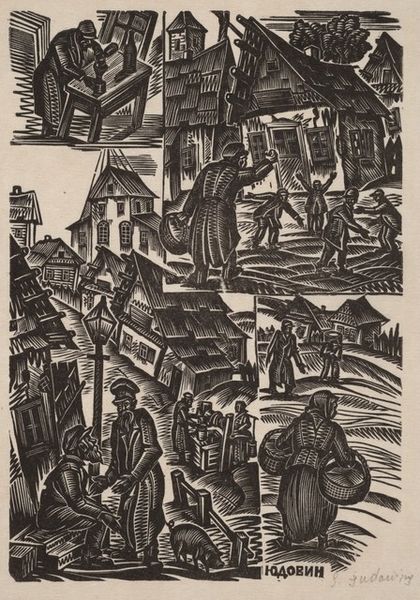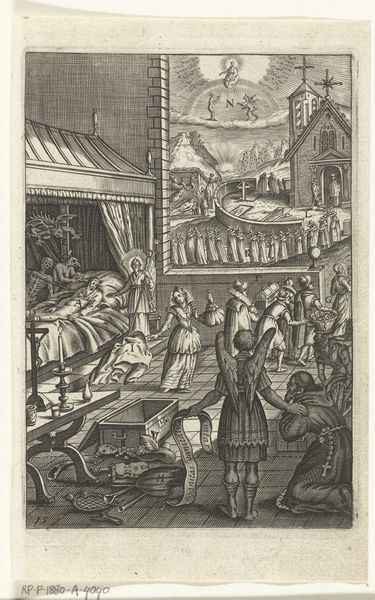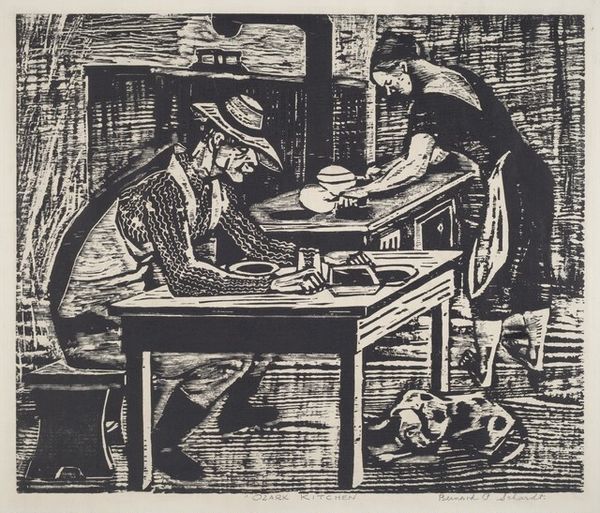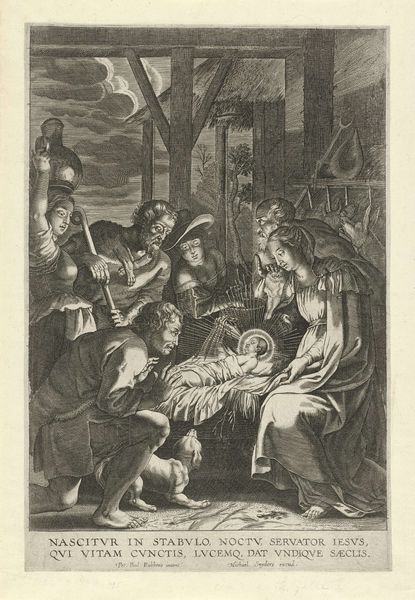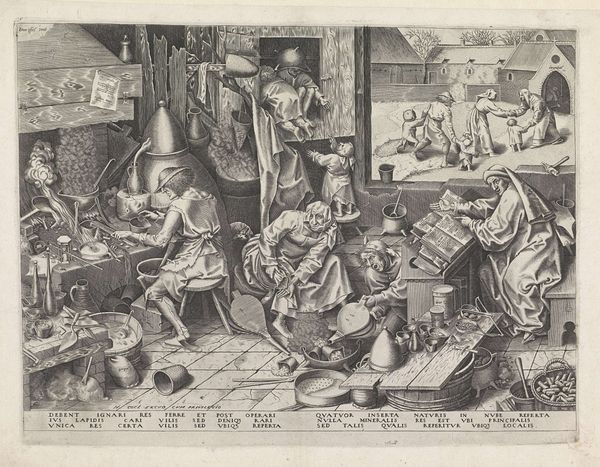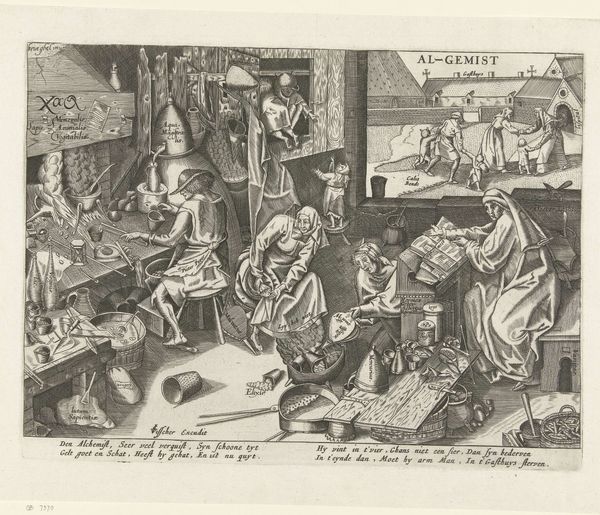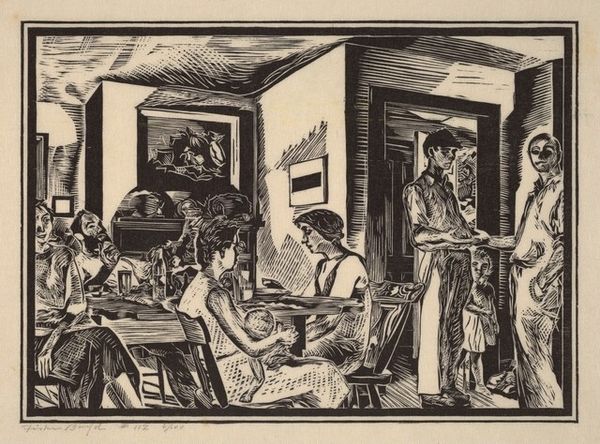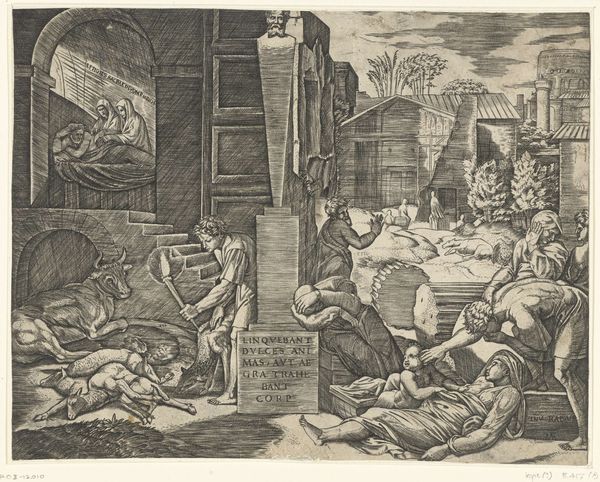
print, woodcut
#
narrative-art
# print
#
woodcut
#
russian-avant-garde
#
cityscape
#
genre-painting
Copyright: National Gallery of Art: CC0 1.0
Curator: This woodcut, created by Solomon Borisovich Judovin in 1929, is entitled "3 Vignettes." The composition is strikingly divided into separate scenes. What's your first reaction to the artwork? Editor: It's intense. The high contrast and the stark black and white lend a sort of urgent, almost clandestine atmosphere. It feels very socially conscious, as if these vignettes are meant to show us something…hidden. Curator: That’s a very astute observation. Judovin, active within the Russian avant-garde, was deeply engaged with depicting Jewish life in Russia. It's crucial to remember the complex socio-political backdrop against which this piece emerged. Consider, too, how these images participate in broader discourses on identity and representation at this historical moment. Editor: Exactly! And it seems deeply invested in documenting the everyday experiences of this community, placing it in a larger narrative. The woodcut medium, with its roots in folk art, only intensifies this commitment. Did the Russian avant-garde give particular emphasis to themes such as daily life? Curator: To a degree, yes. Socialist Realism, though emerging slightly later, promoted accessible art centered on everyday life, glorifying the working class. Judovin predates that fully realized movement, but shares some inclinations. Look, for example, how his use of such a traditional technique—woodcut printmaking—to portray a culture undergoing immense pressure makes this art a deeply political statement, emphasizing cultural survival. Editor: There’s a tension between this visual directness, its social aims, and how those intersect within an era of immense ideological conflict. But there’s still so much left unspoken, relying on viewers to become implicated in piecing the segments together and figuring out these three narrative “vignettes." It is really a fantastic example of narrative art as social critique. Curator: And it serves as a valuable reminder about art's potent ability to operate as historical commentary, inviting continued questioning and reflection across generations. Editor: Agreed, there's much to consider here in regards to this work’s intersectional representations that continues to spark needed conversations around Jewish identity, memory, and representation.
Comments
No comments
Be the first to comment and join the conversation on the ultimate creative platform.
